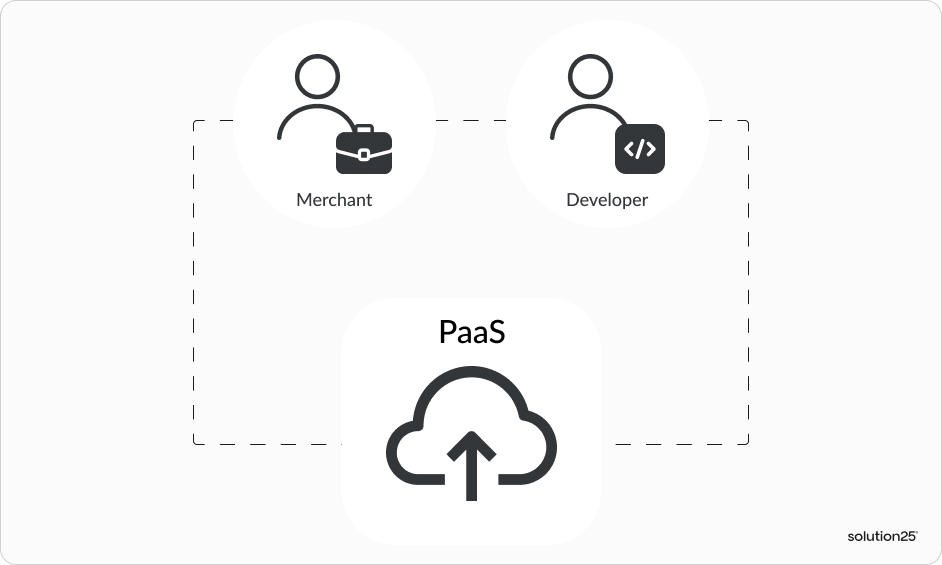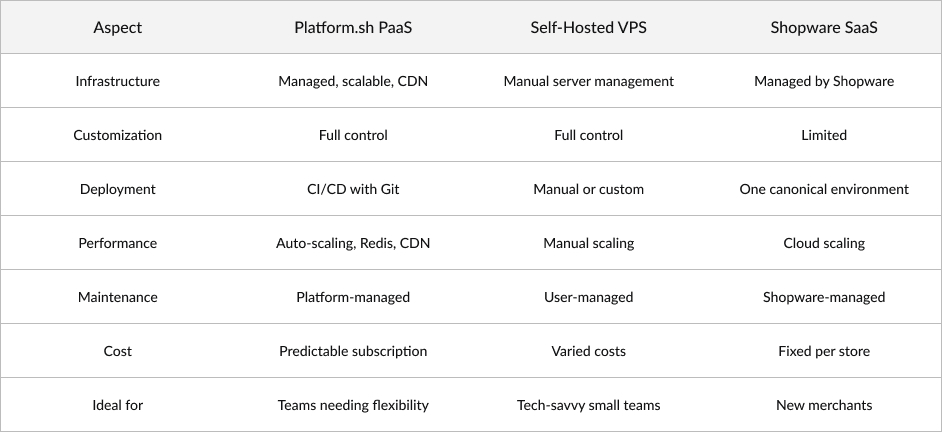Shopware PaaS on Platform.sh
A comprehensive guide to leveraging Platform.sh as a Platform as a Service for Shopware. It covers deployment strategies, scaling performance, and best practices for Git based workflows, environment cloning, and managing services like MySQL, Redis, and Elasticsearch. solution25 explains how this setup enables smooth DevOps workflows, fast project setup, and reliable e-commerce operations.







